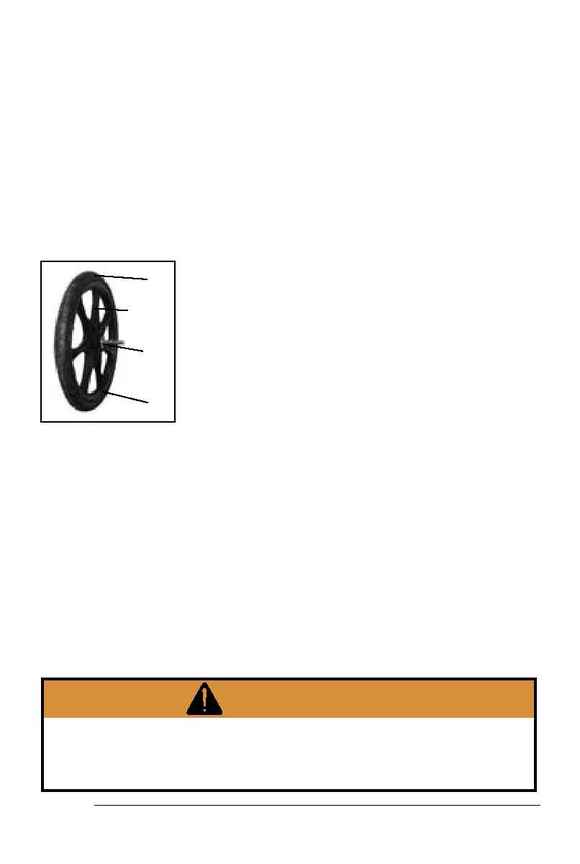
E.36
E.37
CHAPTER FOUR
Inspection, Adjustment & Lubrication
Introduction
The wheels (Figure 4.32) of a child carrier allow the child
carrier to roll down the road or trail smoothly, so their
integrity and structural soundness is crucial. In addition,
their relationship to the performance of the brakes is of
great importance. These instructions explain how to inspect,
adjust, and lubricate the wheels of a child carrier.
Inspection
The best maintenance of a wheel is preventative
maintenance. Be aware of the things that can go
wrong, so you can stop trouble before it happens.
Before every ride
check that the quick-release
mechanism is properly securing each wheel and
that quick-release levers are in their
CLOSED
(locked) position. For further information on
adjusting quick-release hubs, see
Check all wheels
of the child carrier before every ride
on pages 3-5,
or consult your Trek dealer. Check that the wheels
are straight and round by spinning them. If the
rim (Figure 4.32) does not spin evenly, have the
wheel trued (straightened) by your Trek dealer.
Make sure the tires are inflated to the pressure indicated on
the tire sidewalls. Use a gauge and a bicycle pump whenever
possible. Do not fill the tires at gas stations. Because of the
greater pressure and volume of air their pumps release,
blowouts are very possible. Inspect the tires for wear and any
other damage. If a tire has any cuts or separations which go
through the tire, making any part of the inner tube visible,
or if any part of the tire casing shows through the tire tread
(running surface) or knobs are worn or missing, replace the
tire. Make sure the rims are clean. Dirty or greasy rims render
the brakes ineffective. Wipe the rims with a clean rag or wash
them with soap and water, rinse, and let them air dry.
Every week
make sure there are no loose, damaged, or
broken spokes. If a wheel is not in good condition, both the
effectiveness of the brakes and the strength of the wheel are
WHEELS
Figure 4.32- Wheel
Tire
Rim
Hub
Spokes
WARNING
An improperly adjusted hub, where there is movement
between the hub and axle, can cause you to lose control and
fall. Inspect the hubs thoroughly before every ride, and do not
use the child carrier until any problem has been corrected.
Wheels
